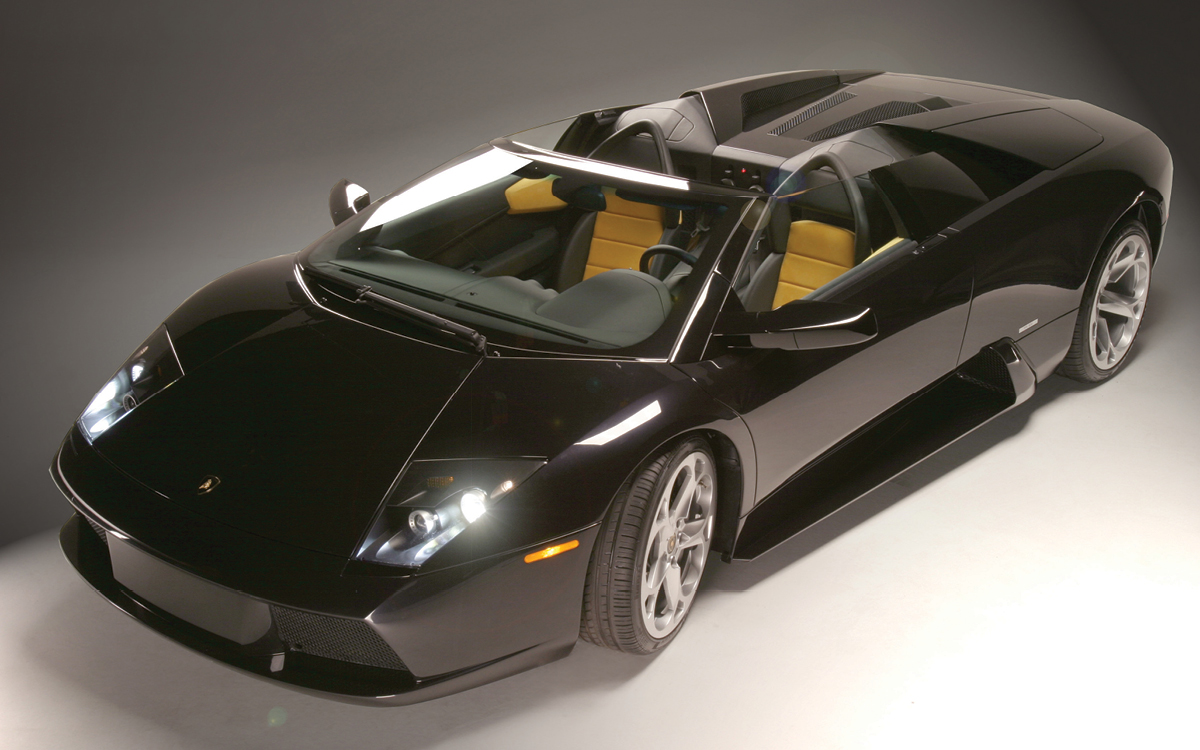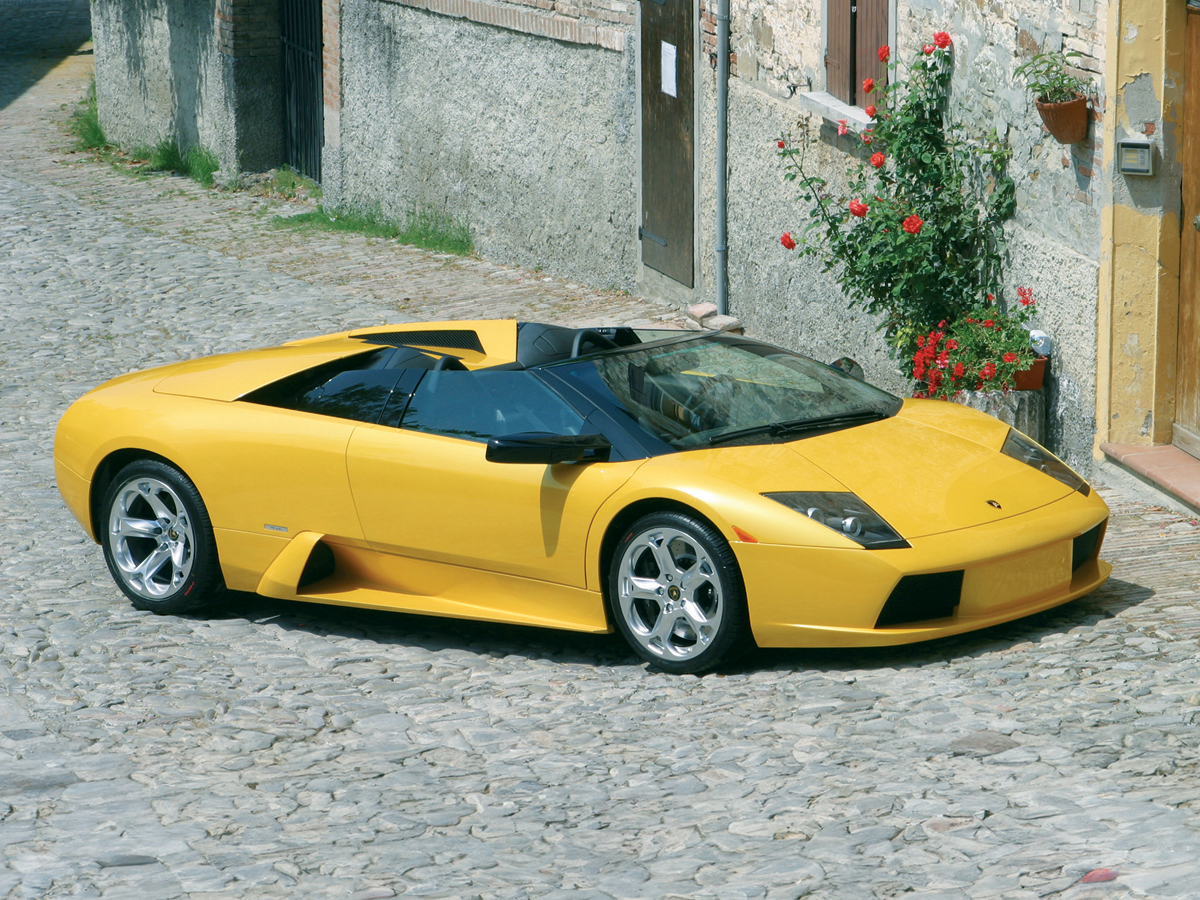Lamborghini’s “Batty” Supercar
While it is axiomatic that supercars get faster and more track-capable with each successive design generation, not all enthusiasts and collectors automatically accept that to mean “better.” Some prefer character traits of past models. For example, Premier’s friend Ed Bolian (VINWiki) describes the Lamborghini Murciélago LP640 with manual transmission as his “favorite car in the world.”
Combine the Murciélago’s visceral character and sinister look with a top that comes off, and you have one of the 899 Murciélago Roadsters built. If you find that delicious sounding blend alluring, and you plan to be in Arizona for the January collector car auctions, Barrett-Jackson should be on your list for a 2006 Lamborghini Murciélago Roadster being offered at no reserve, as are all Barrett-Jackson auctions.
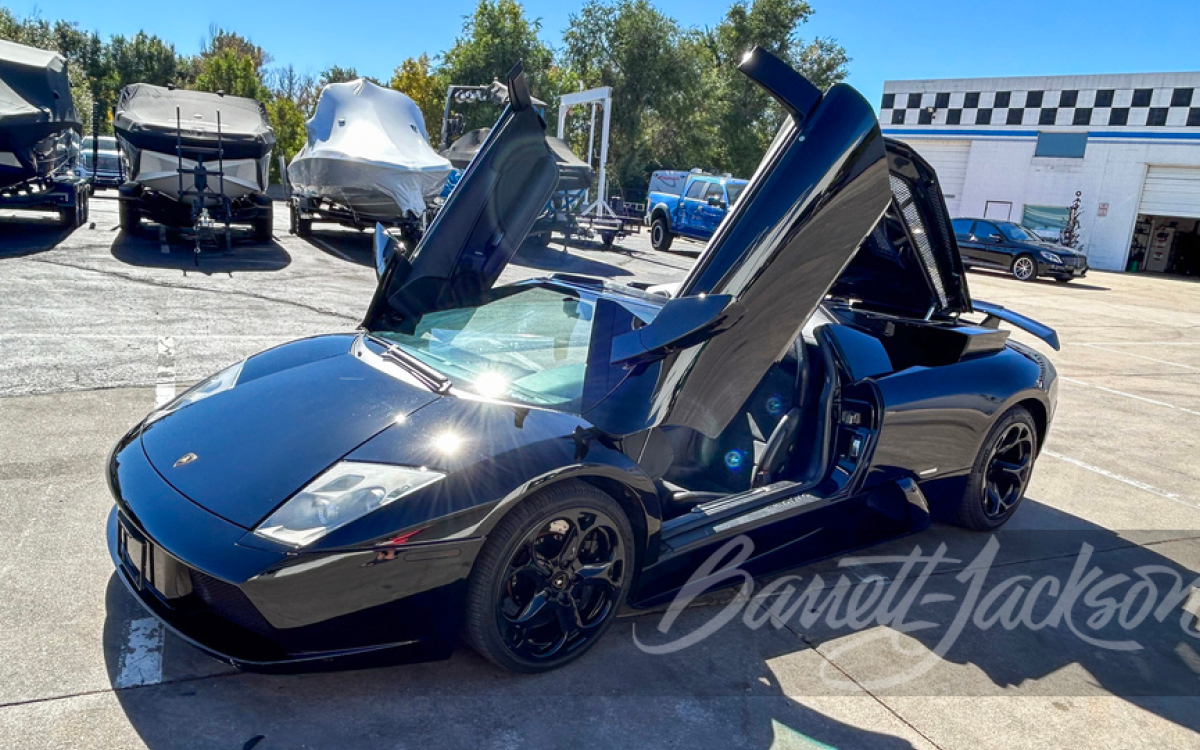
Going to Bat
If you are a fan of the “Batman” movies and watched “Batman Begins” in 2005 or “The Dark Knight” in 2008, you would have seen Bruce Wayne (Batman in his day clothes) driving around in a Lamborghini Murciélago. Lamborghini buffs, of course, know the company usually chooses model names from bullfighting history, so what was the connection, beyond being a car that looked like something Mr. Wayne might drive?
While the name Murciélago was indeed the name of a bull that survived a fight in 1879 in Córdoba, Spain, the name itself means “bat” in Spanish. Pretty cool, eh Batman fans? The successor to the Diablo, the Murciélago remained in production from 2001-2010, with the last of 4,001 total cars built on May 11, 2010 (though production models were numbered to 4,099 and, as noted, 899 were roadsters).
That was 1,080 more cars than Diablo production, evidence of Lamborghini’s upward trajectory under Audi ownership within the Volkswagen Group.
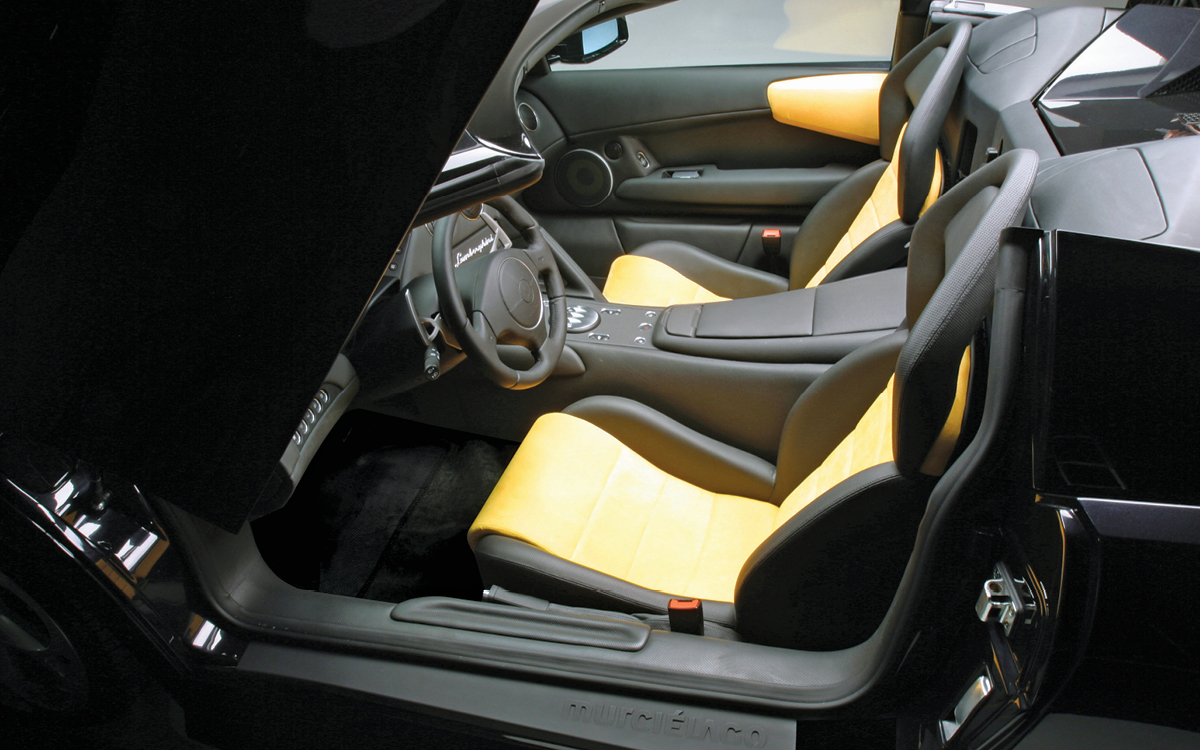
The Stealth Jet Style is Born
And speaking of VW Group, its president at the time, Ferdinand Piech, oversaw development of Lamborghini’s Diablo successor, insisting on more aggressive looking design language than had been proposed at the time. That brought on the stealth fighter jet design influence that helped Lamborghini distinguish itself even more from archrival Ferrari.
The Murciélago can feel like a bigger car than it is when driving, mainly due to being 80.5 inches across at its widest point. Be careful pulling out of the garage. Yet, it’s just 42 inches tall, so watch your head getting in and out. Of course, the “scissor” style doors make an impression every time you get in and out of the Murciélago.
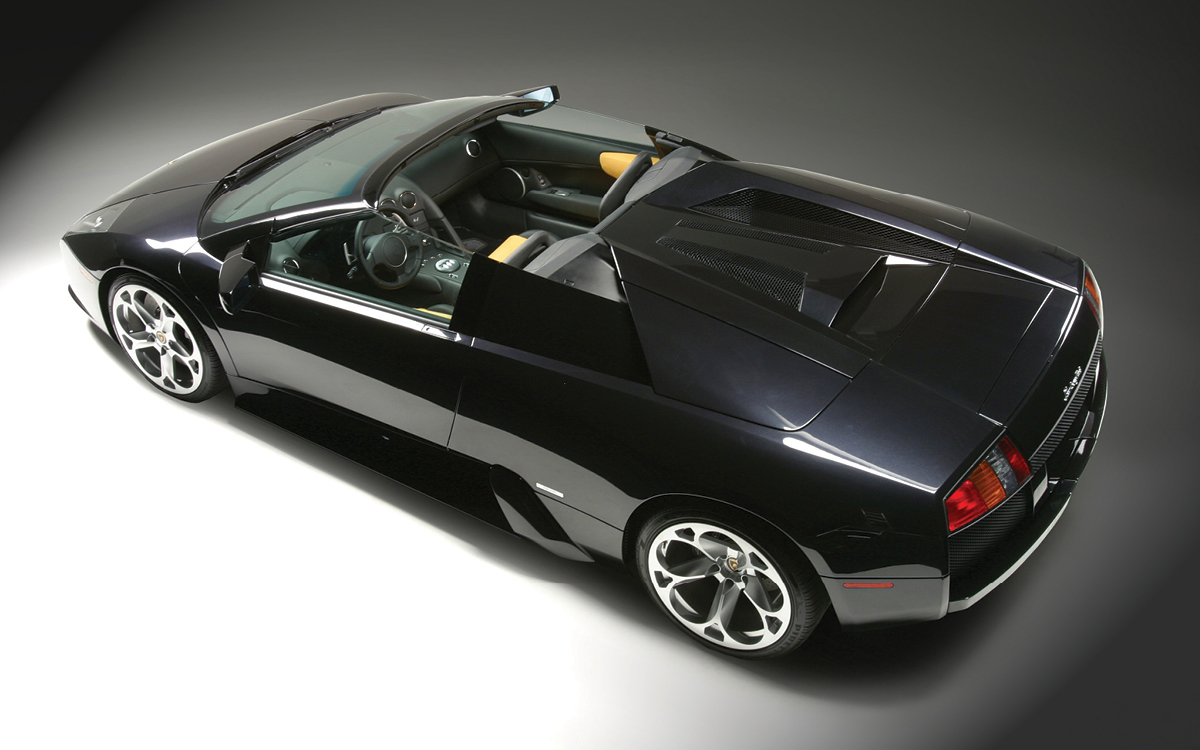
A Big V12 Behind Your Head
The Murciélago had much more than its provocative design to recommend it. Naturally, it was a mid-engine car, as the Lamborghini Diablo, Countach, and Miura before it had been. The engine itself was an evolution of the V12 that had powered Lamborghinis since the beginning with the 350GT.
Lamborghini rated the Murciélago’s 6.2-liter V12 at 572 hp at 7,500 rpm and 479 lb-ft. of peak torque at 5,400 rpm. All-wheel drive, which had been introduced in the Diablo, was became the Murciélago’s standard-issue drivetrain. Showing Audi’s influence, the all-wheel drive helped harness the V12’s power more effectively and became yet another significant differentiator from Ferrari. (Ferrari’s first all-wheel drive model, the FF, arrived for 2012.)
The later Murciélago LP640 model boosted engine cylinder displacement to 6.5 liters and output to 631 horsepower.
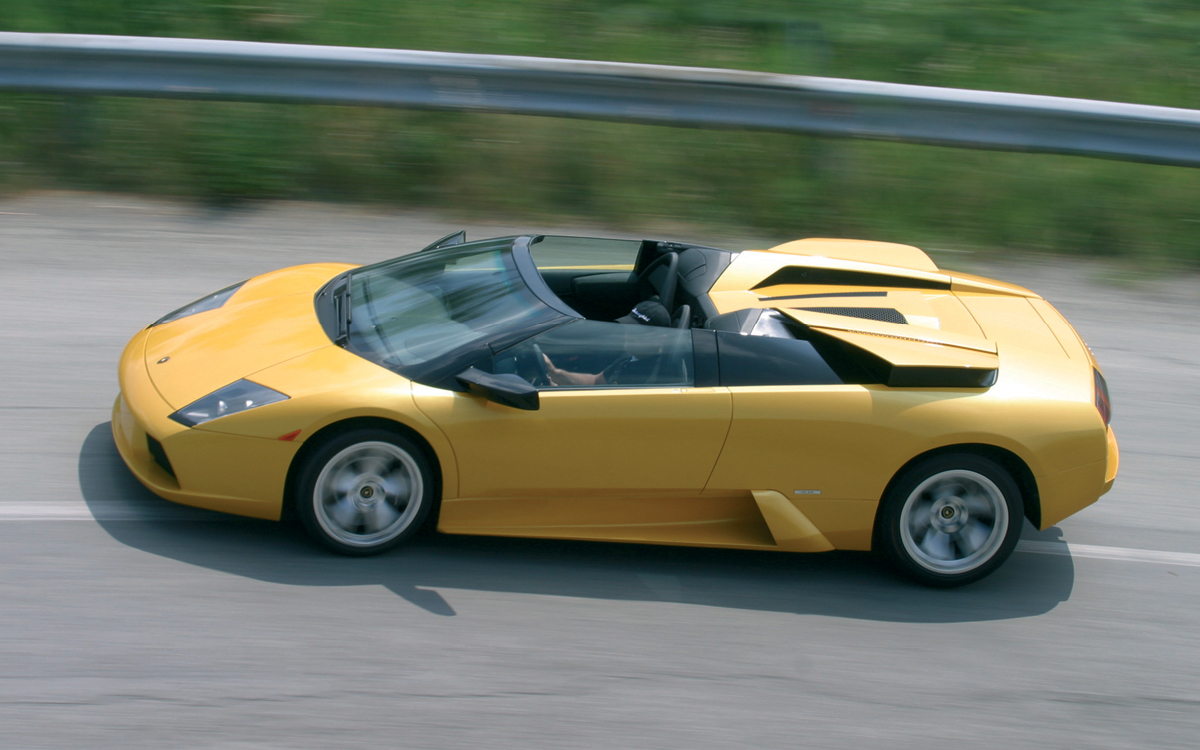
Six of One, Half a Dozen of the Other
The Murciélago came standard with a six-speed manual transmission, but most buyers chose the E-Gear option. This was a robotized version of the manual transmission that automated clutch operation and allowed fast shifting via steering wheel paddles. As many know, the popularity of the manual transmission in these cars plummeted, making them more desirable for some collectors today.
The Murciélago offered at Barrett-Jackson’s Scottsdale auction is equipped with the E-Gear transmission. Lamborghini claimed 0-60 mph acceleration in 3.8 seconds and a top track speed of 205 mph (199 mph for the Roadster.) Four-position electronically controlled shocks gave the driver additional control over the car’s handling and ride characteristics.
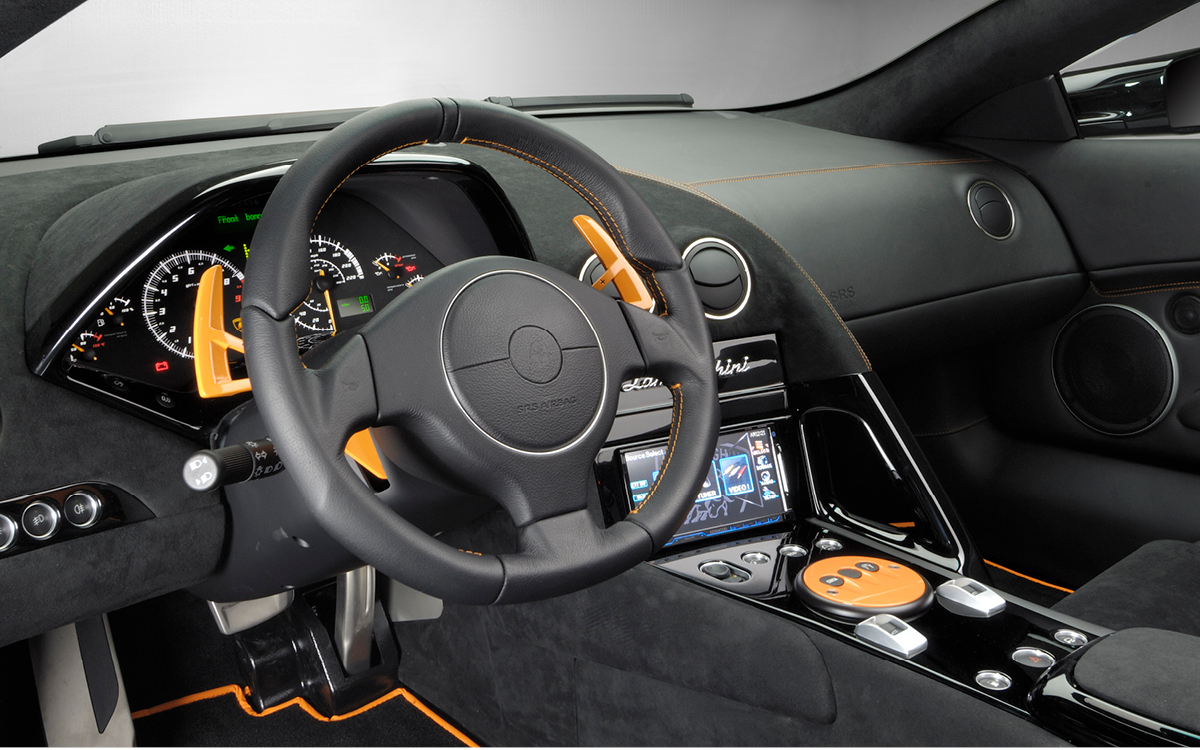
DIY Roadster Roof
There’s another part of the Murciélago Roadster that demands your attention: the “Roadster” part. This is not a “Spyder” with a true convertible top. Instead, think of vintage British sports cars with tops you had to assemble into place. That’s the scenario with the Murciélago Roadster, and it takes patience. (Follow this YouTube video, and you might get the top installed in about eight minutes.) Lamborghini warned Murciélago Roadster owners not to drive the car over 100 mph with the top in place, or it could possibly blow off.
From the Audi side of the family, the A4 Cabriolet donated its automatic rollover bar safety system. Two rollover hoops pop up from behind the seats if the car is about to roll over.
And, speaking of those seats, did you know that Lamborghini allowed you to order a Murciélago with a unique two-tone interior – a different color for left and right sides? Not a choice for the shy, reserved type, we’d guess. But then, neither was the entire Murciélago Roadster.
